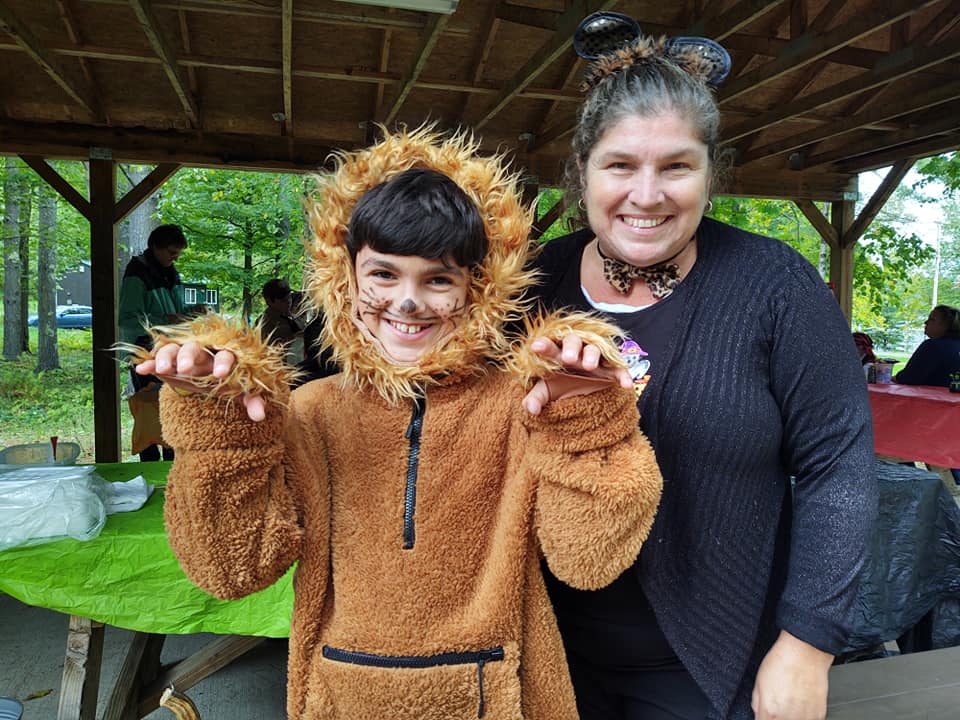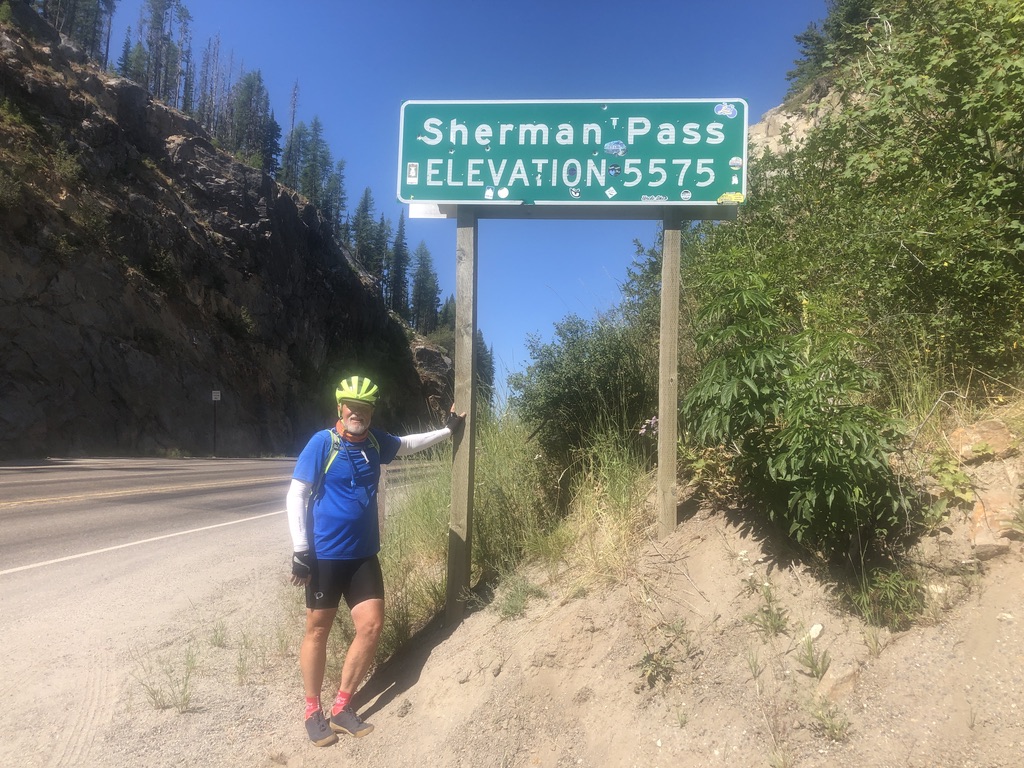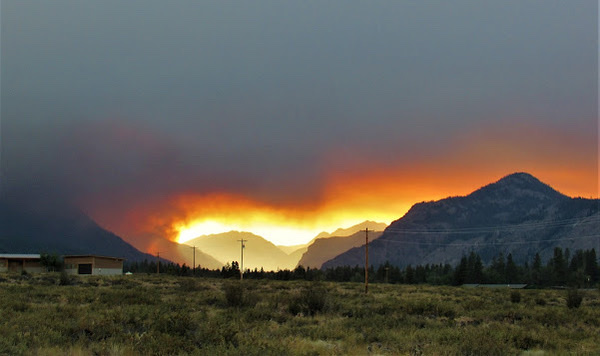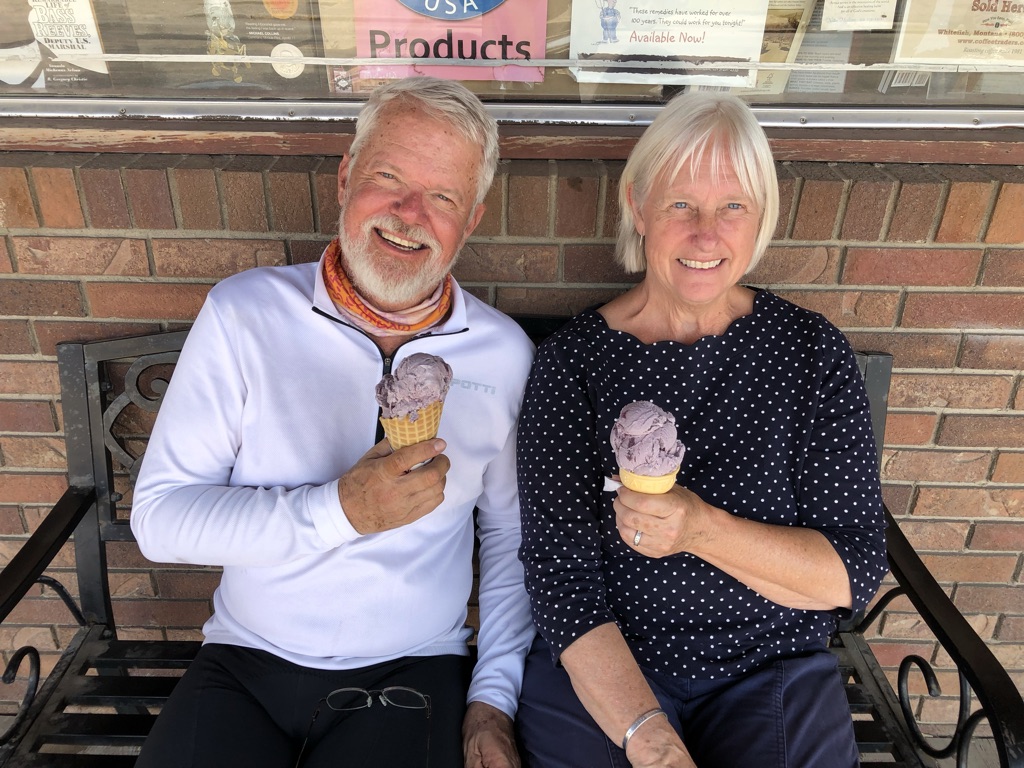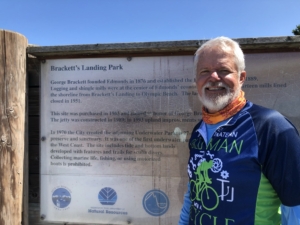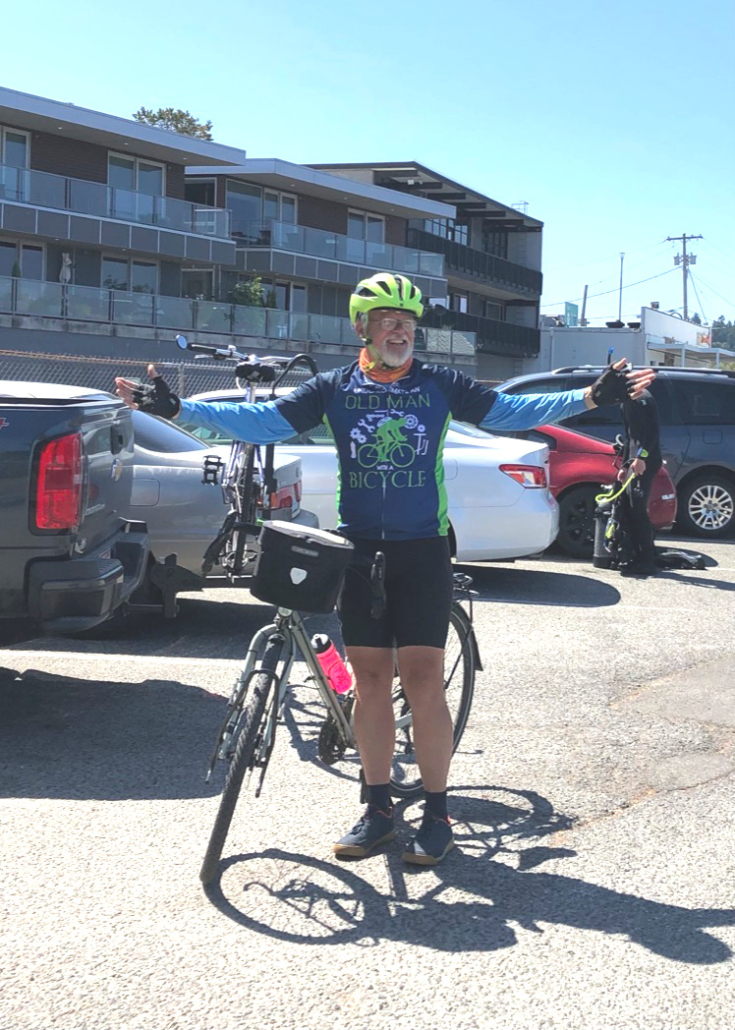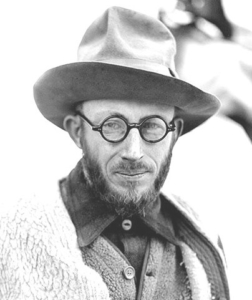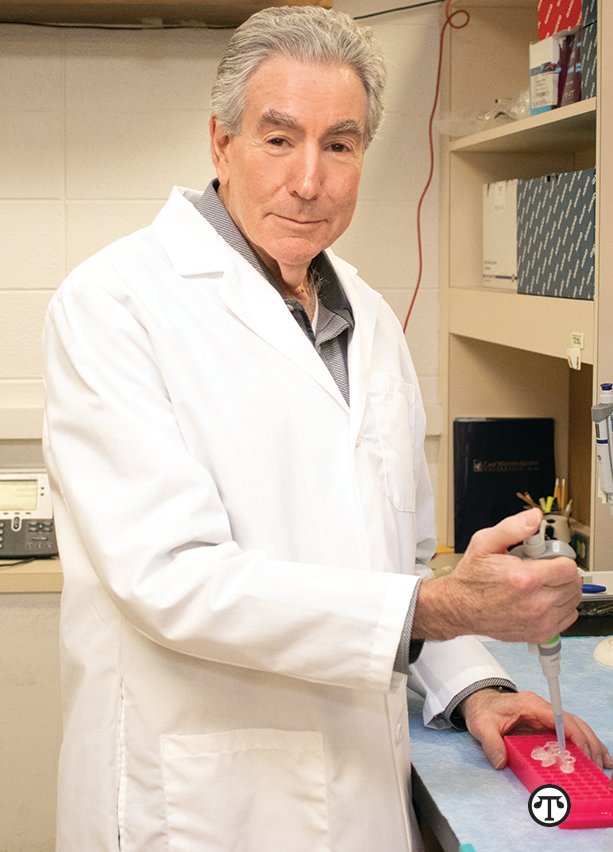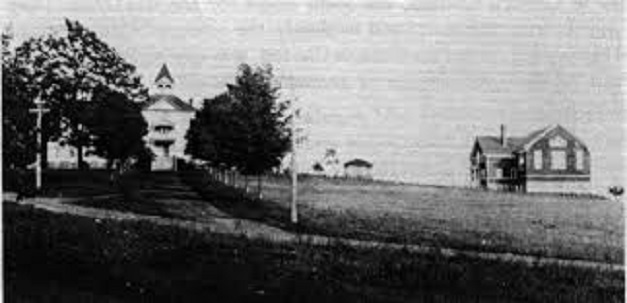
Original Oak Grove School
Vassalboro
In Vassalboro, which until 1792 included Sidney on the west side of the Kennebec River, voters first discussed schools in 1771, the year the town was incorporated. According to Alma Pierce Robbins’ Vassalboro history, voters at a September town meeting approved “Thirty Pounds Lawful money” to support a minister – and refused to appropriate anything to support a schoolmaster.
School districts existed by 1785, in varying numbers and with varying boundaries. After 1806 there was a separate district for members of the Society of Friends (Quakers), at least part of the time.
Oak Grove School, founded by Vassalboro Quakers in 1848 (see The Town Line, July 22), was the third high school established in Vassalboro in the 1800s. The first two were at Getchell’s Corner, a far more important village in the 19th century than it is now.
The earlier, according to Raymond Manson’s research, was Vassalborough Academy.
In his paper on the school, now in the Vassalboro Historical Society’s library, Manson lists the 18 men who, at the beginning of 1835, decided to open a high school. On Feb. 28, 1835, the Maine legislature approved incorporation of The Vassalborough Academy.
Academy trustees commissioned one of their group, Moses Rollins, to build a home for the Academy. Manson wrote that Rollins put the building on the west side of the road through Getchell’s Corner, almost across the street from what was in 1967 Adams Memorial Chapel.
(Rollins, born in 1786, died June 2, 1863, and is buried in Vassalboro’s Union Cemetery. An on-line history says he was a sergeant in one of the Vassalboro companies raised for the War of 1812; this writer found no information on his occupation.)
Nathan Longfellow was the Academy’s first “preceptor,” or teaching principal, serving until the spring of 1837, Manson wrote.
Robbins found an 1837 advertisement in The Kennebec Journal for the Academy’s spring term. Levi Higgins Jr. had succeeded Longfellow; he stayed only one term, Manson said.
The advertisement said quarterly tuition was from $3 to $4.50 (depending on the subjects chosen, as at other high schools). Board was $1.50 to $1.75 a week. Manson wrote that students boarded with neighborhood families in the Academy’s early days, and later arrangements were made to let them room in groups.
In September 1837, Benjamin F. Shaw, who held a bachelor’s degree from Dartmouth, became principal. The trustees were pleased. Shaw left in the spring of 1839, but returned sometime in 1840.
Robbins’ first mention of the second high school is for the year 1837. She quotes a long advertisement from The Kennebec Journal for the School for Young Ladies that “Miss A. Howard” planned to open about April 10.
Miss Howard intended to teach “Reading, Writing, Grammar, and Composition”; “the Rudiments of French and Latin Languages”; “Arithmetic, Geography, with the use of Globes, Intellectual Philosophy and such branches of Natural Science as are usually taught in High Schools”; and “useful and ornamental needlework, Painting and Drawing.”
The School for Young Ladies was across the street from the Academy, and, according to Manson, was so successful that after three years of running the Academy for boys only, the trustees decided they should admit girls. For the spring 1838 term, they added to the one-man faculty an “instructress,” whom they described as “eminently qualified.”
This writer has been unable to find any record of Miss Howard or her school later than 1838.
Vasssalborough Academy apparently adapted to co-ed education promptly. In August 1839 the new principal, Ashiel Moore, added “Chinese Painting and Linear Drawing” (for an extra fee), and in the spring of 1840 he introduced “Wax and Needlework,” specifically for the female students.
Manson found lists of Vassalboro Academy principals, course changes and occasionally tuition fees through the 1840s. There was a new principal about every 12 months, including three Bowdoin men in a row (it is unclear whether they were graduates or still students).
The new principal in the fall of 1848 was Josiah Hayden Drummond, Waterville College Class of 1846 (the first of several Waterville College men to head the school in the 1840s and 1850s). Manson wrote that when Drummond was 14 years old, he had been Vassalborough Academy’s assistant math teacher under Principal Shaw.
Science courses were added, physiology in the spring of 1841, chemistry “and other sciences” in 1842. Manson’s first mention of a music course (type unspecified) was in the fall of 1841.
French and German were the foreign languages taught in 1846. In that year’s fall term, Italian replaced French. In 1856, Latin, Greek, French and German were offered.
By the 1850s and 1860s Vassalborough Academy was publishing catalogs, giving Manson additional information.
For example, in 1856 Principal Reuben Foster had four assistants, one a woman. They taught 78 students in the spring term and 88 in the fall term.
The majority of students lived in Vassalboro. Others were from nearby towns – Augusta, China, Windsor and Winslow. The enrollment also included three students from Hanover (west of Rumford) and one each from Buxton (west of Portland), Olney (neither the web nor Chadbourne’s Maine Place Names lists a Maine town named Olney), Palmyra (north of Pittsfield), South Leeds (southwest of Winthrop) and Topsham (north of Brunswick).
The Academy’s purpose was always to prepare male students for college or for teaching. The 1856 catalog repeated these goals and added preparation for business. For girls, the catalog offered “an elevated course of female education.”
By 1861, Manson said, Oak Grove Seminary was providing serious competition for Vassalborough Academy. The 1860s were probably when, according to Kingsbury, the Academy building was used for “religious as well as secular instruction.”
William Penn Whitehouse, Colby 1863, became Academy principal in the fall of 1863 – perhaps the last principal, Manson wrote. (Whitehouse later became a Justice of the Maine Supreme Court [see The Town Line, Dec. 10, 2020].)
The Methodist Society bought the Academy building in 1868. Manson added an item from the April 29, 1870, Waterville Mail saying the work to convert the building to a Methodist church should be finished by July 1870.
The Getchell’s Corner Methodists merged with the North Vassalboro church in 1890, Manson continued. After the merger, he wrote, the building “became a general store and was destroyed by fire about 1917. All that remains of the old academy are the foundation walls.”
There might have been a successor to Vassalborough Academy. Robbins mentioned in 1869, in quotation marks, ” ‘the upper school’ at North Vassalboro,” where Lewis Mowers was the teacher. She provided no further information.
After the Maine legislature required town high schools in 1873, Robbins wrote, Vassalboro opened two, in East Vassalboro and at Riverside.
According to Vassalboro Historical Society President Janice Clowes and information in the Historical Society library, the East Vassalboro High School was on the west side of Main Street, approximately opposite the present Grange Hall. Kingsbury said voters appropriated $500 for the building in 1873, but by 1892 “the continued success of Oak Grove Seminary has superseded the necessity for the high school.”
Undated postcards the Society owns show a two-story wooden building with an attic. Two doors with a window between them face east, toward the street; the second floor has a single front window above the ground-floor one, and above that is a semi-circular attic window.
Accompanying information calls the school a primary or grammar school. It was discontinued in the latter half of the 1920s, and students moved to the “new” East Vassalboro School. That building now houses the Historical Society museum.
Neighbor Harold Taylor bought the old schoolhouse in the 1930s, and his daughter, Betty Taylor, had the building torn down in 1981, according to Historical Society records.
The 1873 Riverside School, Clowes says, is the building on the north side of Webber Pond Road, a short distance east of Riverside Drive (Route 201). She commented that it has been “very changed.”
In 1873, too, North Vassalboro residents spent more than $6,000 for a new school building there. Kingsbury called it the “best school building in the town,” with “three departments, and a large public hall on the second floor.”
Neither Kingsbury nor Robbins said what grades it housed. After serving as a school and then as the town office building, it is now the office of Mid-Maine Internal Medicine.
Robbins cited an 1889 state law that required each public school teacher to “devote ten minutes of each day to the principle of kindness to birds and animals.”
After the 1903 state law telling the town to pay $30 tuition to “any high school of standard grade,” Robbins wrote that from Vassalboro, 33 students went to Oak Grove Seminary, 10 chose Coburn Classical Institute, in Waterville, four attended Erskine Academy, in China, and one each went to high schools in Hallowell and Yarmouth.
Vassalboro historians Alma Pierce Robbins and Raymond Russell Manson
Alma Pierce Robbins was born Oct. 4, 1898, in Vassalboro, youngest of five children of Ira James Robbins (1855-1929) and Lucy Alma (Smiley) Robbins (1862-1930). She died Nov. 29, 1997, aged 99 years and almost two months, according to an on-line genealogy.
The three girls in the family were travelers. Older sister Elsie Marion (1886-1960) died in California; second sister Edna Mildred (1888-1987, another long-lived family member) lived in Massachusetts and Illinois; and Alma Pierce worked in Massachusetts and died in Florida.
Their brother Wendell Ira (1891-1983) spent his life in Augusta. Brother Maurice Smiley (1893-1970) got as far away as Mechanic Falls, but died in Waterville and is buried in China’s Chadwick Hill Cemetery.
Robbins’ obituary, published in Nantucket County, Massachusetts, says that after elementary schooling in Vassalboro, she graduated from Brewster Academy, in Wolfboro, New Hampshire, in 1917 and attended colleges in New Hampshire and Massachusetts.
For more than 30 years she was a social worker in Boston. She lived on Nantucket and edited the Nantucket Historical Association newsletter.
The genealogy, but not the obituary, says that from January to December 1928 Robbins was married to Herman Schwartz. In 1930, the genealogy says, she was described as an osteopath in Brunswick, where she lived for about two years.
On-line military records show Robbins enlisting in the Women’s Army Corps on Aug. 14, 1944, from Boston. Army records describe her as unmarried and without dependents. She had had four years of college; her occupation was in the category “Social and welfare workers.” She was discharged Sept. 2, 1945.
The obituary says after retirement, “she lived in Vassalboro, Clearwater [Florida], and Arcata [California],” moving to Florida permanently in 1985. Her “numerous published writings” include the 1971 Vassalboro history.
With permission of her great-nephew Stephen Robbins, between 1990 and 2003 The Town Line published several of Robbins’ articles describing early 20th-century life on the family farm on Webber Pond Road.
Raymond Russell Manson, another Vassalboro historian, wrote a short autobiographical piece for the Maine State Library’s Special Collections compilation of correspondence from Maine writers. The library has made his 1967 information available on line.
Manson wrote that he was born Oct. 6, 1899 (almost exactly a year later than Robbins), in North Vassalboro, George Thomas and Mary Jewett Manson’s fifth child.
He went to Vassalboro elementary schools and graduated from Oak Grove Seminary, Class of 1918. He entered Colby College in the Class of 1922, apparently after army service in World War I. On June 1, 1919, while still in college, he became a post office employee in Waterville, rising to the rank of Assistant Postmaster before he retired on Dec. 31, 1960.
He married Vivian Crafts (born Nov. 19, 1904), from Watertown, Massachusetts, on Sept. 3, 1930. They lived on Burleigh Street in Waterville; both were Christian Scientists.
Manson was a member of the Vassalboro Masons and the Vassalboro Historical Society. He wrote numerous historical pieces about his native town, including the history of Oak Grove that he and Elsia Holway Burleigh wrote in 1965 (previously cited in this series; see The Town Line, July 22, issue).
Manson died Jan. 11, 1980. In 1989 his widow married Clarence Merryfield; the couple lived in Belfast until 1993, when they returned to Waterville. She died there Dec. 5, 2006.
Main sources
Kingsbury, Henry D., ed., Illustrated History of Kennebec County Maine 1625-1892 (1892).
Manson, Raymond M., Vassalboro Academy (June 15, 1967; manuscript, Vassalboro Historical Society).
Robbins, Alma Pierce, History of Vassalborough Maine 1771 1971 n.d. (1971).
Websites, miscellaneous.
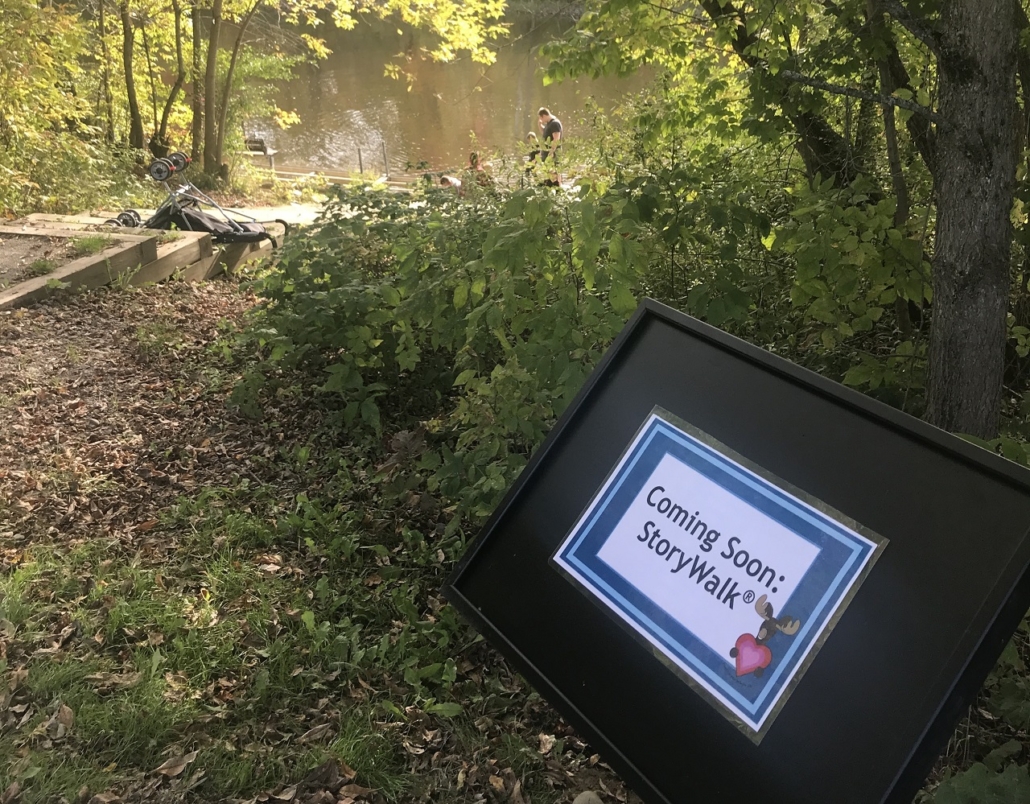 The Waterville Public Library and partners are delighted to announce the launch of a StoryWalk® at the North Street Community Connector Trail, in Waterville. Beginning Saturday, October 23, 2021, please visit and enjoy reading the book Daniel Finds a Poem, by Micha Archer, as you walk along the trail behind the North Street playground and alongside the Messalonskee Stream. Daniel Finds a Poem celebrates the poetry that is in and for everyone and everything. What is poetry? If you look and listen, it is all around you!
The Waterville Public Library and partners are delighted to announce the launch of a StoryWalk® at the North Street Community Connector Trail, in Waterville. Beginning Saturday, October 23, 2021, please visit and enjoy reading the book Daniel Finds a Poem, by Micha Archer, as you walk along the trail behind the North Street playground and alongside the Messalonskee Stream. Daniel Finds a Poem celebrates the poetry that is in and for everyone and everything. What is poetry? If you look and listen, it is all around you!

